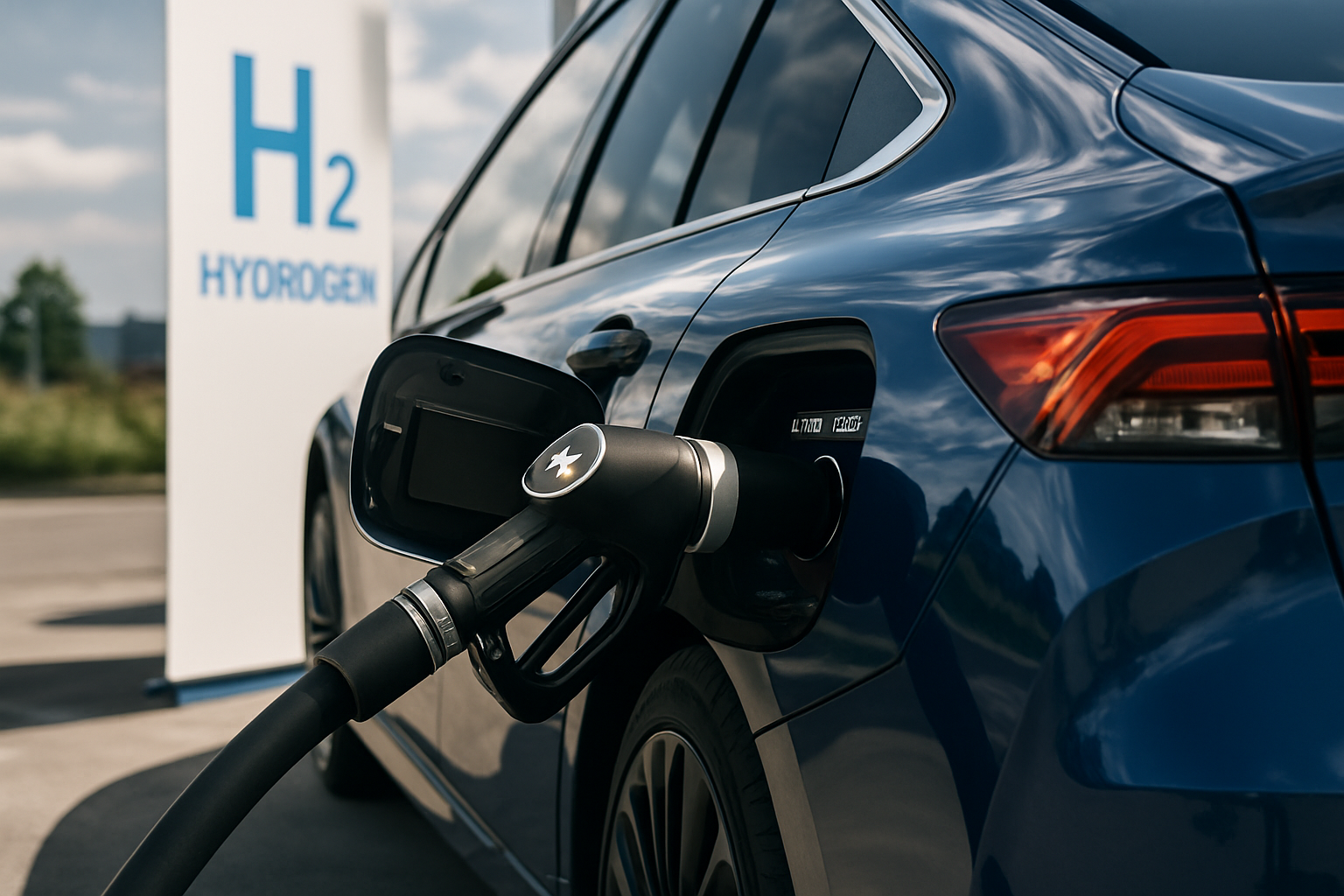Hydrogen Fuel Cells: The Quiet Revolution in Automotive Power
In a world increasingly focused on sustainable transportation, hydrogen fuel cell vehicles are quietly making waves. This cutting-edge technology promises zero-emission driving with the convenience of quick refueling. But how exactly do these vehicles work, and what potential do they hold for reshaping our automotive landscape? Let's dive into the world of hydrogen fuel cells and explore their transformative impact on the future of driving.

This process is remarkably efficient, with fuel cells capable of converting up to 60% of hydrogen’s energy into electricity, compared to around 20-35% for conventional internal combustion engines. The technology also offers rapid refueling times, typically taking just a few minutes to fill a hydrogen tank, addressing one of the main concerns associated with battery electric vehicles.
The Journey from Concept to Reality
The concept of fuel cells dates back to 1838 when Welsh physicist William Grove first demonstrated the principle. However, it wasn’t until the 1960s that NASA began using fuel cells in its space programs, providing both power and drinking water for astronauts. This spurred further research and development, eventually leading to their application in terrestrial vehicles.
The first practical fuel cell vehicle was introduced by General Motors in 1966 with the Electrovan, though it was never commercially produced. Fast forward to the 21st century, and we’ve seen significant advancements in fuel cell technology, with major automakers like Toyota, Honda, and Hyundai leading the charge in bringing hydrogen-powered vehicles to market.
Current State of Hydrogen Fuel Cell Vehicles
Today, several hydrogen fuel cell vehicles are available for purchase or lease in select markets. The Toyota Mirai, Honda Clarity Fuel Cell, and Hyundai NEXO are among the pioneering models that have made it to production. These vehicles offer driving ranges comparable to conventional gasoline-powered cars, typically around 300-400 miles on a single tank of hydrogen.
One of the most significant advantages of fuel cell vehicles is their quick refueling time. While battery electric vehicles can take hours to charge, hydrogen vehicles can be refilled in just a few minutes, offering a familiar experience for drivers accustomed to traditional gas stations. This aspect makes hydrogen fuel cells particularly attractive for long-distance travel and commercial applications where downtime needs to be minimized.
Infrastructure Challenges and Solutions
Despite the promising technology, the widespread adoption of hydrogen fuel cell vehicles faces a significant hurdle: infrastructure. The number of hydrogen refueling stations remains limited, with most concentrated in California and a few other locales globally. This chicken-and-egg problem – where consumers are hesitant to buy hydrogen vehicles without adequate refueling options, and companies are reluctant to invest in infrastructure without a sizeable market – has slowed the technology’s growth.
However, efforts are underway to expand the hydrogen infrastructure. Countries like Japan, Germany, and South Korea are investing heavily in hydrogen refueling networks. In the United States, California leads the way with plans to have 200 hydrogen stations by 2025. Additionally, innovative solutions like mobile refueling stations and on-site hydrogen production are being explored to accelerate infrastructure development.
Environmental Impact and Production Methods
While hydrogen fuel cell vehicles produce zero tailpipe emissions, the overall environmental impact depends on how the hydrogen is produced. Currently, most hydrogen is derived from natural gas through a process called steam methane reforming, which does generate carbon emissions. However, there’s a growing push towards green hydrogen production using renewable energy sources.
Electrolysis, which uses electricity to split water into hydrogen and oxygen, is becoming increasingly viable as renewable energy costs decrease. When powered by solar or wind energy, this method can produce truly zero-emission hydrogen. Other innovative production methods, such as using algae or converting waste into hydrogen, are also being researched and developed.
The Role of Hydrogen in a Multi-Solution Future
As the automotive industry transitions towards sustainability, it’s becoming clear that there’s no one-size-fits-all solution. While battery electric vehicles have gained significant traction, hydrogen fuel cells offer unique advantages that make them well-suited for certain applications. Long-haul trucking, buses, and other heavy-duty vehicles benefit from the quick refueling and long range offered by hydrogen technology.
Moreover, hydrogen fuel cells can complement battery electric vehicles in creating a more robust and flexible zero-emission transportation ecosystem. For instance, in areas where electrical grid capacity is limited, hydrogen refueling stations can provide an alternative to large-scale charging infrastructure.
Future Prospects and Innovations
The future of hydrogen fuel cell technology looks promising, with ongoing research aimed at improving efficiency, reducing costs, and enhancing durability. Innovations in catalyst materials, such as using less platinum or finding alternatives, could significantly reduce production costs. Additionally, advancements in hydrogen storage technologies, including solid-state storage methods, could increase the range and safety of fuel cell vehicles.
Beyond personal transportation, hydrogen fuel cells are finding applications in various sectors. From powering data centers to providing backup power for telecommunications, the versatility of this technology is opening up new possibilities across industries.
As we look to the future, hydrogen fuel cells represent a compelling piece of the sustainable transportation puzzle. While challenges remain, the potential benefits of this technology in terms of quick refueling, long range, and zero emissions make it a crucial player in our transition to a cleaner, more sustainable automotive landscape. As infrastructure expands and technology advances, we may well see hydrogen fuel cell vehicles playing an increasingly significant role on our roads, quietly revolutionizing the way we think about automotive power.





